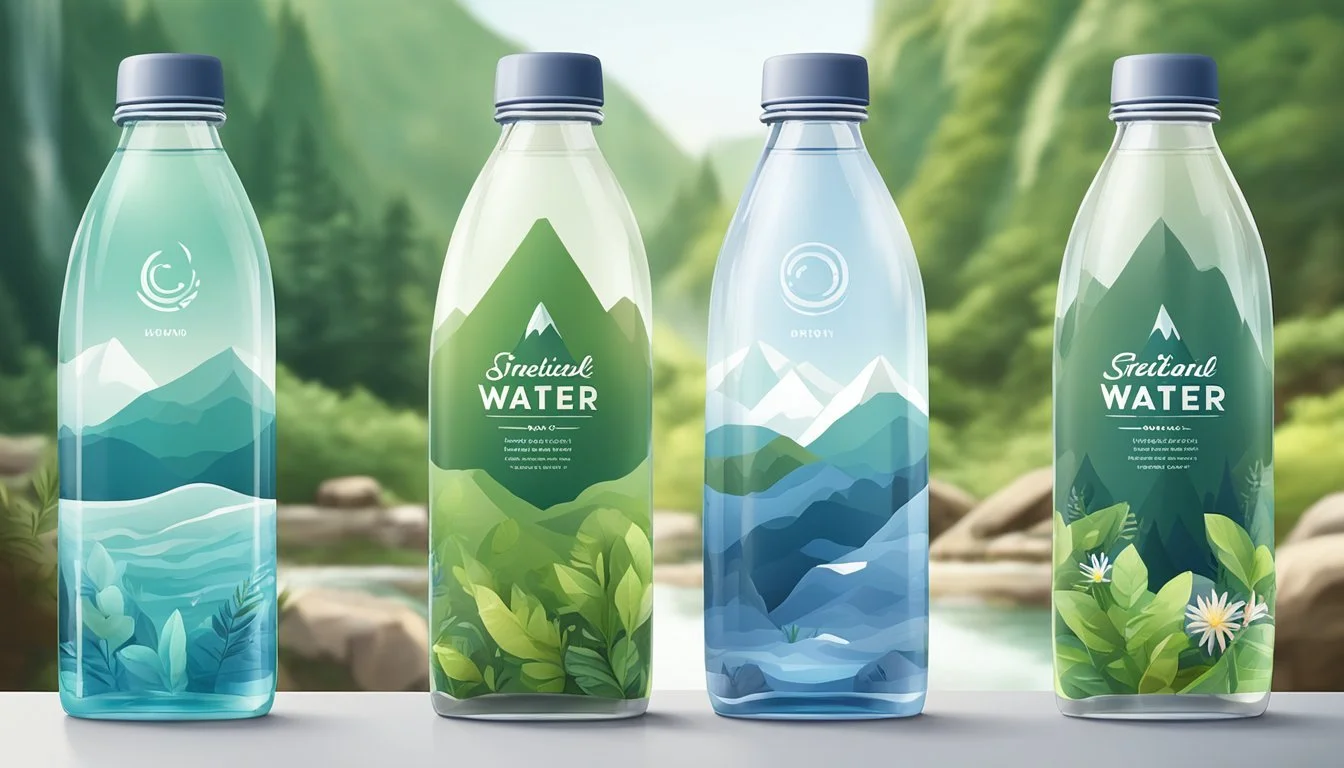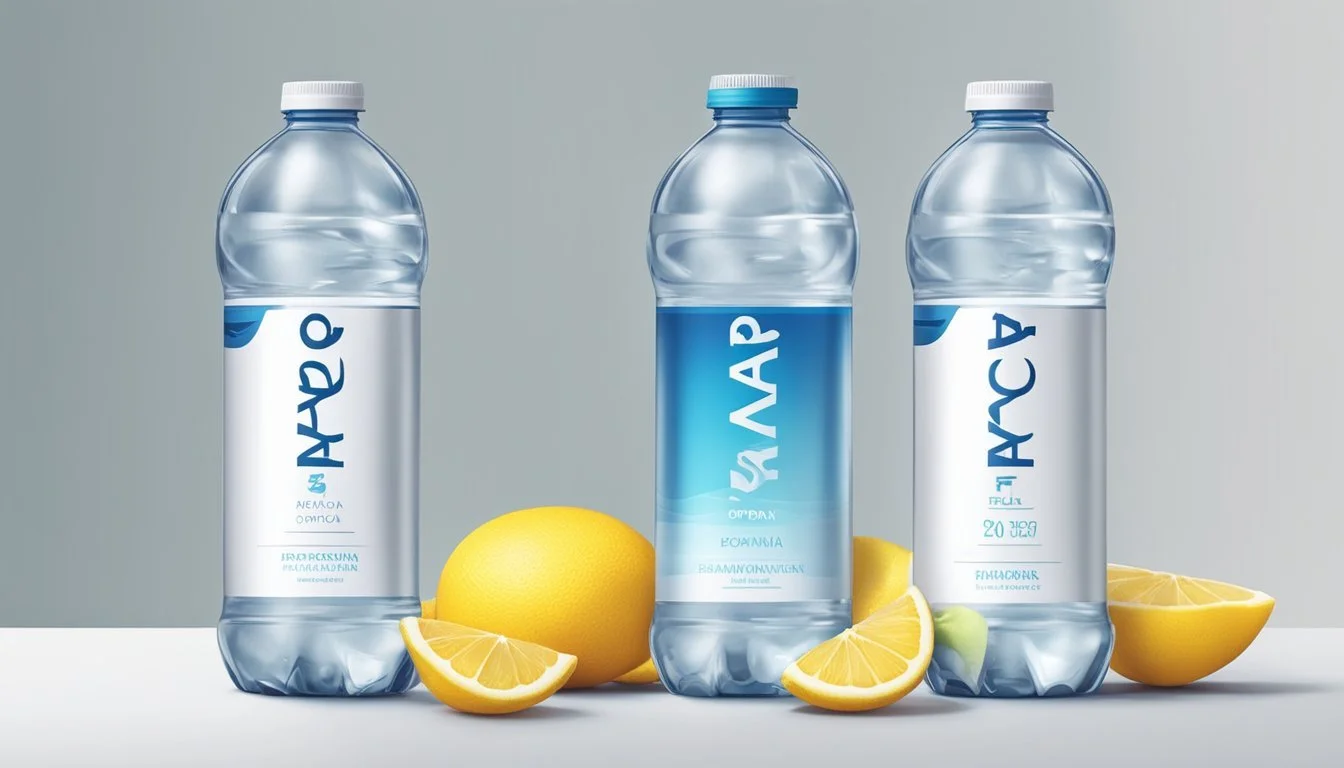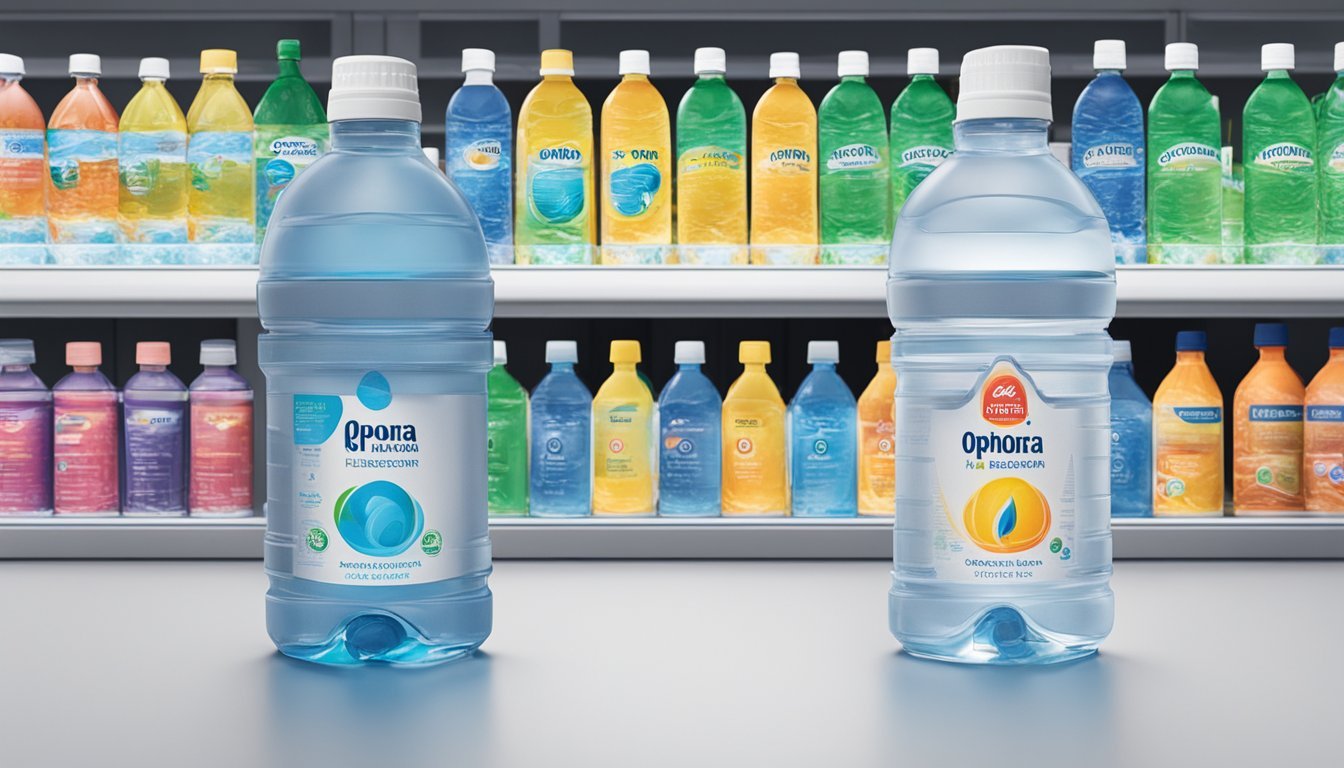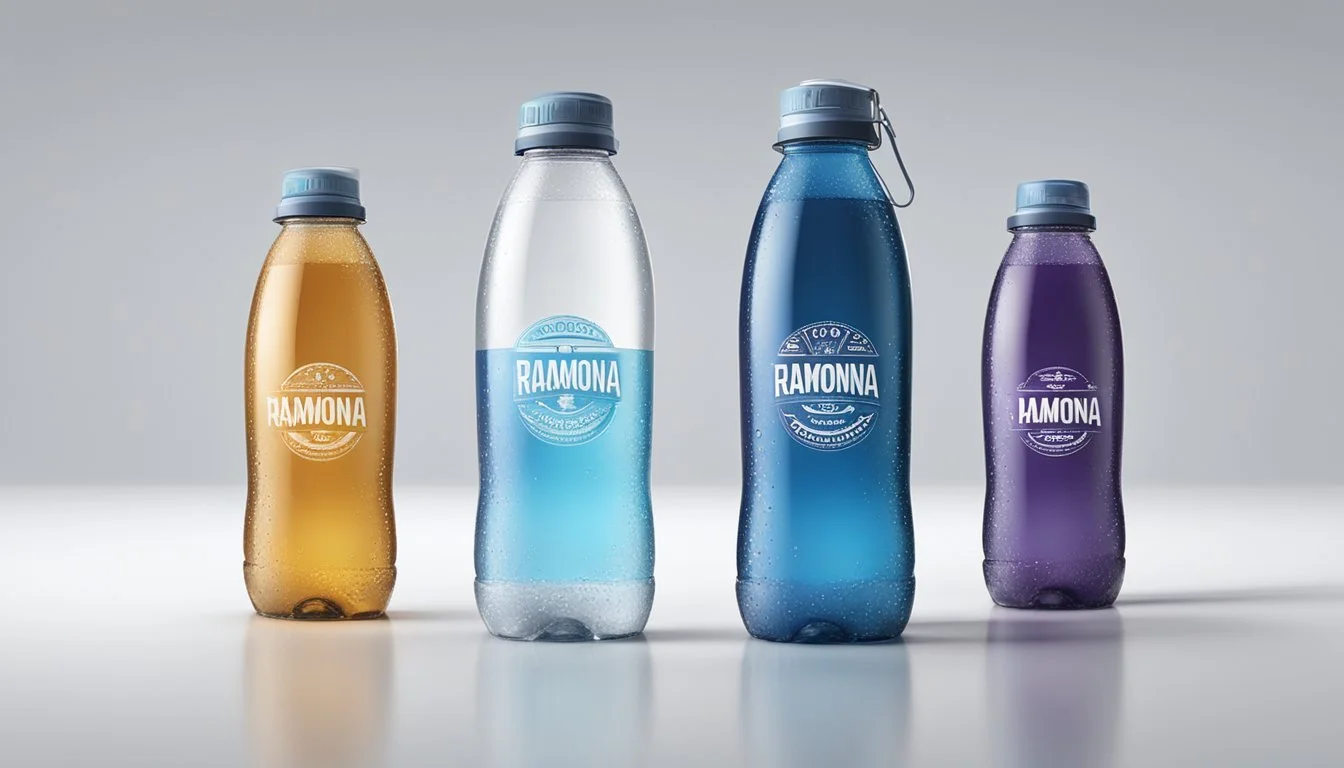Ophora vs. Ramona
Ultimate Bottled Water Comparison
In the quest for the perfect bottled water, many consumers find themselves choosing between premium brands like Ophora and Ramona. Ophora, known for its ultra-pure and oxygenated water, offers a taste experience that sets it apart from many competitors. This brand prides itself on delivering an exceptionally clean finish, free from contaminants and impurities, appealing to those who seek the purest form of hydration.
Ramona, on the other hand, is celebrated for its natural minerality and well-balanced flavor profile, attributed to its source from pristine springs. Its slight mineral content provides a refreshing and crisp taste, making it a popular choice among natural spring water enthusiasts.
When comparing these two brands, consumers must consider their preferences for purity versus natural minerals. Those who prioritize ultra-purity and enhanced oxygenation will likely prefer Ophora, while individuals who appreciate the subtle taste of natural minerals may gravitate towards Ramona. This comparison helps clarify the distinct advantages each brand offers to bottled water aficionados.
Understanding Bottled Water
Drinking bottled water is a common practice worldwide for hydration. Various types of bottled water offer distinct benefits based on their source, processing methods, and composition.
Types of Bottled Water
Bottled water can be categorized into natural spring water and purified water.
Natural spring water is sourced directly from natural underground springs, maintaining its mineral content. Examples include Evian and Fiji Water.
Purified water, on the other hand, undergoes processes such as reverse osmosis or distillation to remove impurities and contaminants. Brands like Aquafina and Dasani fall into this category.
Other varieties include alkaline water and mineral water, each with unique characteristics and health benefits.
The Importance of pH in Water
The pH level of bottled water ranges from acidic (below 7) to alkaline (above 7).
Alkaline water, with a pH level typically between 8 and 9, is believed to neutralize acid in the bloodstream. Some brands, like Waiakea, emphasize the natural alkalinity derived from their sources.
Conversely, highly purified bottled water may have a lower pH, leading to a more neutral or slightly acidic balance. The pH level can affect taste and potentially influence health benefits.
The Role of Electrolytes in Hydration
Electrolytes such as sodium, potassium, and magnesium are vital for maintaining proper hydration and bodily functions.
Certain bottled waters are explicitly infused with electrolytes to aid in hydration, particularly after intense physical activity. For instance, Essentia water undergoes micro-filtration and reverse osmosis, ensuring high purity and consistent electrolyte levels.
These components help regulate nerve function, muscle contractions, and water balance in the body, making electrolyte-rich water a preferred choice for athletes and active individuals.
Analyzing Water Quality and Sources
Understanding the differences in water quality and sources between Ophora and Ramona involves examining their purification processes, natural sources, and how they compare to standard tap water. This section provides a detailed look into these factors.
Tap Water vs Bottled Water
Tap water typically comes from local municipal sources and undergoes treatment to meet safety standards. It may contain additives like chlorine and fluoride, which help disinfect and promote dental health. In contrast, bottled water like Ophora and Ramona often undergoes additional filtration and purification processes, providing a different taste and potentially higher purity.
Municipal tap water can sometimes contain trace contaminants despite strict regulations. Bottled water brands aim to minimize these through advanced filtration methods. Consumers often choose bottled water for this perceived increase in quality and purity.
Natural Sources and Water Purity
Ophora water is sourced from natural springs and claims to offer unparalleled purity. Natural spring water is typically rich in minerals, contributing to its unique taste and nutritional benefits. By contrast, Ramona emphasizes using naturally sourced water but details fewer specifics about its source locations compared to Ophora.
Natural water sources vary significantly in purity depending on their environment. Springs generally offer cleaner water than rivers or lakes due to natural filtration through earth and rock layers. Understanding the source is crucial in assessing the overall quality and benefits of each bottled water brand.
Reverse Osmosis and Purification Processes
Both Ophora and Ramona utilize advanced purification techniques to ensure their water quality. Ophora employs reverse osmosis, micro-filtration, and ultraviolet exposure to achieve high purity levels. These methods remove a wide range of contaminants, making the water exceptionally clean.
Reverse osmosis, a process where water is forced through semi-permeable membranes, effectively eliminates impurities like dissolved salts and harmful chemicals. The addition of UV exposure helps in disinfection by eliminating microorganisms, ensuring the water's safety.
Ramona, while also employing thorough purification processes, may not detail its methods as explicitly as Ophora. Regardless, these purification steps are critical in providing high-quality bottled water that stands above standard tap water in terms of purity and taste.
Comparing Ophora and Ramona
Ophora and Ramona bottled waters differ significantly in their brand philosophies, water treatment technologies, health benefits, and taste profiles. These aspects aim to cater to unique consumer preferences and health considerations.
Brand Philosophies and Origins
Ophora prides itself on providing premium, high-quality water that promotes health and wellness. The brand targets discerning consumers seeking the healthiest water options.
Ramona is more accessible and popular for its emphasis on sustainable sourcing and affordability. They appeal to environmentally conscious consumers who value both purity and ecological impact.
Both brands cater to distinct market niches but share a commitment to water quality.
Water Treatment Technologies
Ophora employs advanced filtration techniques including micro-filters, reverse osmosis, and ultraviolet exposure to ensure 99.9% purity. They also infuse the water with electrolytes and ionize it to achieve a high alkaline pH of 9.5.
Ramona focuses on natural filtration processes, relying on spring water sources that undergo minimal processing. While they do not achieve the same high alkalinity as Ophora, their water retains natural minerals.
The disparity in treatment methods results in different health claims and target demographics.
Health Benefits of Alkaline and Hyper-Oxygenated Water
Ophora's alkaline water, with its high pH, is marketed to balance body acidity levels and improve hydration. They also promote the hyper-oxygenation aspect, claiming it enhances oxygen delivery at the cellular level.
Ramona provides naturally-filtered water which preserves essential minerals like calcium and magnesium. While it doesn't possess the same alkalinity, its natural composition supports general hydration needs.
Both brands offer distinct health benefits, with Ophora focusing on enhanced hydration and potential body balance, and Ramona emphasizing natural mineral content.
Taste Profiles
Ophora's water boasts a smooth, clean taste due to its meticulous purification and added electrolytes. The hyper-oxygenation may contribute to a slightly unique flavor, described as crisp and refreshing.
Ramona’s water has a more natural taste, attributed to its minimal processing and retained mineral content. Consumers often note its fresher and more robust flavor profile compared to highly-treated waters.
Taste preferences between the two brands may vary, offering choices for those who prioritize purity or those who enjoy a natural, mineral-rich taste.
The Science Behind Hydration
Hydration is crucial for maintaining health and supporting bodily functions. It's important to understand how minerals and pH levels in water contribute to overall hydration and wellness.
Hydration and Health
Maintaining proper hydration is essential for bodily functions such as digestion, nutrient transportation, and temperature regulation. Water intake replenishes lost fluids and supports muscle function and joint lubrication.
Dehydration can lead to fatigue, headaches, and impaired cognitive function. Athletes and active individuals need to be especially mindful of their hydration status.
Hydropathy, or water therapy, has historical significance, emphasizing the health benefits of adequate water intake. Although the 8x8 rule (eight 8-ounce glasses a day) has been debated, drinking enough water remains a cornerstone of health.
The Impact of Minerals and pH on the Body
Minerals like calcium, magnesium, and potassium can be found in bottled water, contributing to the healthiest water options. These minerals support bone health, muscle function, and electrolyte balance.
The pH level of water, on a scale from 0 to 14, affects its alkalinity. Alkaline water, typically with a pH above 7, is believed by some to provide additional health benefits. It can neutralize acid in the bloodstream, offering relief to those with acid reflux.
Different bottled water brands boast varying mineral content and pH levels, influencing hydration and overall health. It's important to consider these factors when choosing a bottle, especially for fitness enthusiasts and individuals with specific health needs.
Market Analysis
The bottled water market is highly competitive, with brands like Ophora and Ramona vying for consumer attention through distinct attributes. Analyzing consumer preferences and comparing these brands with other popular options provides insight into their market positioning.
Consumer Preferences and Trends
Consumers increasingly prefer bottled water that promises purity, health benefits, and environmental sustainability. Ophora markets itself as offering ultra-pure water with additional oxygen for enhanced health benefits. This positions it well among health-conscious buyers.
Ramona emphasizes its natural mineral content and refreshing taste. It appeals to consumers seeking flavor and natural composition. Both brands capitalize on trends toward healthier lifestyles and sustainability, reflecting broader consumer demands in the current market.
Comparison with Other Popular Brands
Comparing Ophora and Ramona with established brands such as Mountain Valley and Evian shows varied positioning. Mountain Valley is renowned for its spring water's velvety texture and mineral presence. Evian, known for its high brand recognition, offers a consistent and reliable taste due to its source in the French Alps.
Ophora's unique selling point is its oxygenation process, which stands out against traditional mineral waters. Ramona's emphasis on natural minerals places it in competition with brands like Perrier and San Pellegrino that highlight their mineral-rich profiles. By focusing on unique attributes, both Ophora and Ramona aim to capture specific segments of the bottled water market.
Safety and Regulations
When comparing Ophora and Ramona bottled water, it's crucial to consider the safety measures and regulations each adheres to. This includes analyzing potential contaminants, filtration processes, and certifications.
Contaminants and Filtration Standards
Ophora: Ophora water employs advanced filtration methods targeting a wide range of contaminants. These include fluoride, chlorine, and heavy metals like lead and arsenic. They use a multi-stage filtration system that ensures high purity and safety.
Ramona: Ramona water is also subjected to rigorous filtration processes. Their approach focuses on removing harmful substances such as heavy metals and microbiological contaminants. While both brands strive for purity, the specific methods and extent of filtration can differ, providing unique results.
Certifications and Industry Standards
Ophora: Ophora holds multiple certifications that attest to its adherence to industry standards for safe drinking water. These include NSF International certification and Compliance with FDA regulations. These certifications underscore their commitment to providing safe, high-quality water.
Ramona: Ramona water is similarly certified, meeting guidelines from the Food and Drug Administration (FDA) and the Environmental Protection Agency (EPA). They also boast industry-specific certifications, ensuring they maintain high standards across their production processes, giving consumers confidence in their product's safety.
Environmental Considerations
Environmental considerations for bottled water concern sustainability in production and the broader impact on the environment. Each aspect is critical for consumers who prioritize eco-friendly choices.
Sustainability in Bottled Water Production
Sustainable production involves responsible sourcing and manufacturing practices. Ophora focuses on small-batch filtration processes and local artisanal bottling. This approach minimizes resource use and reduces transportation emissions.
Ramona, on the other hand, integrates large-scale bottling operations. Despite higher volumes, they strive for sustainability by using renewable energy sources in their plants. They also prioritize using recyclable materials in their packaging, aiming for a reduced carbon footprint.
Overall, both companies emphasize sustainability, but their methods and scale differ significantly. Ophora’s localized approach contrasts with Ramona’s large-scale, energy-efficient operations. Each reflects a commitment to reducing environmental impact in different ways.
The Impact of Bottled Water on the Environment
The environmental impact of bottled water extends beyond production. Disposal and transportation contribute significantly to pollution. Plastic waste is a major concern, with millions of bottles ending up in landfills and oceans annually.
Ophora uses glass bottles, which are more environmentally friendly as they are reusable and recyclable. This reduces plastic waste and lowers long-term environmental impact.
Ramona employs lightweight, recyclable plastic, which lessens the carbon footprint during shipping but still contributes to plastic waste. They also participate in various recycling initiatives to offset this impact.
Consumers should consider these factors. Ophora’s use of glass bottles offers a greener option, while Ramona’s efforts in recycling and using less plastic highlight their commitment to reducing environmental damage. Each brand takes steps to mitigate their ecological footprint, though the effectiveness varies.
Conclusion
When comparing Ophora and Ramona bottled waters, several factors come into play.
Ophora is known for its advanced purification process. It utilizes a combination of micro-filtration, reverse osmosis, and ultraviolet exposure to ensure high purity levels. This results in water that not only tastes clean but also boasts a high pH level.
In contrast, Ramona highlights its eco-friendly packaging. This brand uses plastic-free materials, addressing environmental concerns. Additionally, Ramona avoids harmful chemical additives, making it a healthier choice for consumers concerned about plastic-related health issues.
A key difference lies in their source and processing methods. Ophora's meticulous purification process guarantees 99.9% purity, whereas Ramona focuses on natural, less processed water sources.
Comparative Table:
Feature Ophora Ramona Purification Micro-filtration, reverse osmosis, UV Natural sources, minimal processing pH Level High (9.5 or more) Standard Packaging Traditional plastic Plastic-free, eco-friendly Health Aspects Purity-focused, high pH No harmful chemical additives
Price can be another deciding factor. Ophora tends to be premium-priced because of its intense purification process. Meanwhile, Ramona may offer a more cost-effective option without compromising too much on health benefits.
In conclusion, the choice between Ophora and Ramona largely depends on individual priorities. If purity and high pH are paramount, Ophora may be the better selection. On the other hand, if eco-friendly packaging and avoiding harmful chemicals are top priorities, Ramona is the clear winner.
More About Ophora
Mountain Valley Spring Water vs Ophora: Which Bottled Water is Better?
Ophora vs Kirkland Signature: Which Bottled Water is Better?
Richard's Rainwater vs Ophora: Which Bottled Water is Better?
Whole Foods Italian Still Mineral water vs Ophora: Which Bottled Water is Better?








